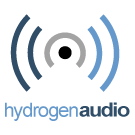Pulse Code Modulation: Difference between revisions
No edit summary |
No edit summary |
||
| Line 1: | Line 1: | ||
'''Pulse Code Modulation''' ('''PCM''') is a method of recording sound as digital data. The amplitude of the audio signal is sampled at a regular [[sampling frequency]], and [[Quantization|quantized]] with a fixed [[bit depth]]. | '''Pulse Code Modulation''' ('''PCM''') is a method of recording sound as digital data. The amplitude of the audio signal is sampled at a regular [[sampling frequency]], and [[Quantization|quantized]] with a fixed [[bit depth]]. | ||
This technology was created by Alec Reeves in 1937. | |||
See also: [[PDM]] and [[PAM]] | |||
[http://homepage.ntlworld.com/quantium/ahr/pcm.htm A page on PCM history] | |||
{{stub}} | {{stub}} | ||
Revision as of 12:41, 22 March 2005
Pulse Code Modulation (PCM) is a method of recording sound as digital data. The amplitude of the audio signal is sampled at a regular sampling frequency, and quantized with a fixed bit depth.
This technology was created by Alec Reeves in 1937.
This article is a stub. You can help the Hydrogenaudio Knowledgebase by expanding it.
